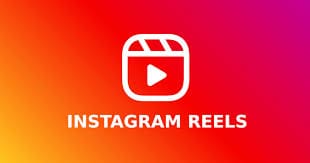

If we talk strictly about the meaning of the term blog, it derives from web-log, literally “online diary” or “electronic diary”.
In the late 1990s, i blog they were mainly lists of links related to a particular topic, commented by the author, and had a certain role as precursors of search engines.
In the early 2000s this type of information sharing began to change: link lists were increasingly abandoned, while comments and personal opinions on a variety of topics gained more and more space.
With the birth of platforms that allowed the free publication of blog, anyone with a minimum of passion for writing saw an opportunity to share their thoughts, reflections, experiences, expressed in the form of post or articles. And soon Google intervened which, with the birth of AdSense, allowed those who had a blog to earn through advertisements.
The prospect of income favored the development of countless blog of any topic and type of content.
On the one hand, however, they sprouted like mushrooms blog of poor quality, were born in those years too blog very important, such as those linked to major newspapers.
After surviving the advent of social networks, which for a moment made them fear the decline of blog in favor of Twitter-style mini-posts, we can say that today the blog has assumed its own precise identity, with defined technical and stylistic characteristics.
And its growth has meant that creating and managing a blog has now become a real full-time job.
For define the blog modern we have observed certain characteristics that have consolidated over time and are now part of all blog (or almost) present on the web. These are both structural and stylistic elements.
This is true both for websites that have a Blog section inside them, and for sites that are born as simple blogs.
For define a blog in the most current sense of the term, we can start first from the navigation and orientation structure within it.
First, like any site, a blog must have a menu. This usually contains a link to the "About" page, which is about you or your staff. If you offer services, add a section dedicated to them in the menu, and to any section of particular interest. Finally, don't forget the page from which to contact you.
But the particularity of the blog is that its contents, that is articles, are divided according to certain categories. A menu item could indicate the categories of your posts.
Being a very important element, I also dedicated some lessons on purpose to explain the use of categories in our video course on How to Create a Blog. Check out our online courses for more information.
To to define blog a website, categories must certainly be present, but also other types of content classification, such as tags and data, which allow you to easily find a text that interests the reader. So, we can define a blog as a site that organizes content based on:
For example, we can have a post entitled "The best restaurants in Rome open late" which has the category "Restaurants", and therefore the more generic topic. Its tags can be "Rome", "best restaurants", or even "nightlife", which are more specific topics. If a reader wanted to find this item based on the topic, it could search by tags and categories.
However, it can often be useful to find the articles based on the period in which they were published, and for this reason in the blog an “Archive” section often appears in which the articles are broken down by month.
The ability to search by category, tag or date can be provided in the menu, as we have seen above, but also in the sidebar or footer.
Therefore, a site within which it is possible to search for content based on categories, tags and dates, can be defined a blog.
The post page contains elements that should never be missing. It is divided into well-defined sections, which help the reader to orient himself.
In the header you will find the title and logo of the site and the menu. A sidebar may appear on the side of the page and at the bottom we will find the footer. These elements are typical of virtually any website. But for define a blog above all it will be necessary that there is a main section with the post and comments.
Specifically, the main section usually includes:
The title of theitem it must be clearly visible. Under the title may appear the date of publication, a subtitle, which summarizes the topic to be talked about, and sometimes even an image in evidence. The content of theitem real with, at the end, a box in which to insert a short biography of the author.
Tags and categories will also be indicated in this section.
Finally, the comments area includes the form to send a comment to the post and the list of previous comments, in chronological order or, more often, anti-chronological (ie with the most recent at the top).

